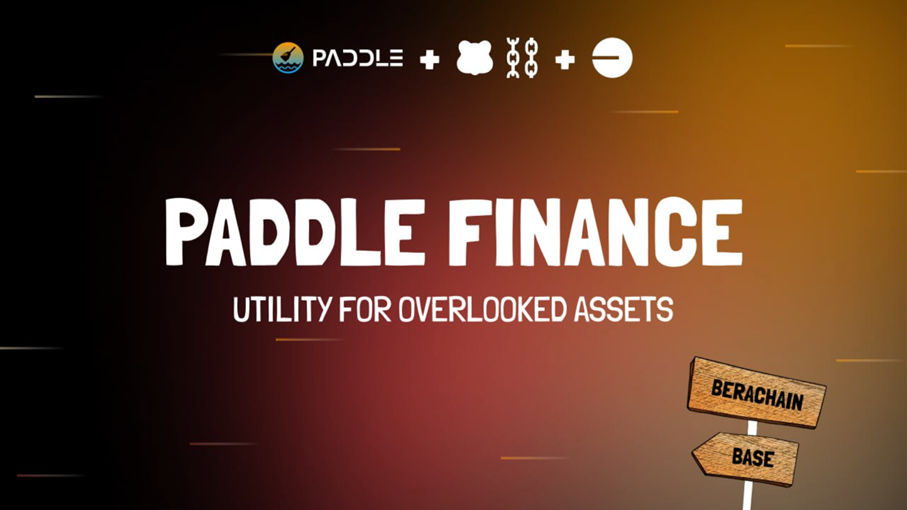Paddle Finance Launches on Berachain: Enabling Liquidity for Forgotten Assets

While most DeFi protocols today still revolve around familiar assets such as blue-chip tokens, liquid stablecoins, and staking protocols, another asset class has been quietly developing but has been overlooked by the market. These are NFTs, LP tokens, meme tokens, and tokenized real-world assets (RWAs) – all of which have value, but have little place to put them to good use.
Paddle Finance is here to address that gap. It is a decentralized lending and trading protocol specifically designed to unlock liquidity from “unconventional” assets – assets that are not ERC-20 compliant but are increasingly popular in user wallets. PaddleFi currently operates on both Base and Berachain – with Berachain alone reaching over $2.69 billion in total value locked (TVL), making it a hotbed for non-traditional projects.
Berachain: A fertile ground for non-traditional protocols
Unlike other L1s or L2s, Berachain differentiates itself with its Proof of Liquidity (PoL) model, which incentivizes liquidity tied to real on-chain action rather than passive staking. This is ideal for protocols like PaddleFi – which rely on user activity rather than just capital accumulation.
Berachain is also home to a vibrant NFT ecosystem, attracting degenerative communities with collectibles like Steady Teddys, Bullas, Mibera, and Yeet. PaddleFi has integrated these NFTs for lending, OTC trading, and community liquidity creation, turning them into assets that can be used rather than simply owned.
How does PaddleFi work?
Unlike most DeFi platforms that only support standard tokens, PaddleFi targets non-standard assets with real value. The protocol provides unique features:
- NFT lending: Supports both peer-to-peer lending and instant lending.
- Trustless OTC trading: Lend NFTs, RWAs, and micro-tokens without the need for a centralized exchange.
- Collateral basket: Allows users to pool multiple assets into a single loan.
This approach provides maximum flexibility for users, especially those who own assets that are "hard to use" on conventional platforms - from NFT collectors, low-cap token holders to investors in real-world assets being tokenized.
Promising Early Growth
To date, PaddleFi has reached over $2.55 million in TVL, processing over $3 million in trading volume in April alone. Notably, much of the activity is coming from NFT-native and degenerate communities on Berachain – people who often own assets that are off the radar of major exchanges.
Assets like “middle-class” NFTs, low-float meme tokens, and early-stage RWA projects are being put to good use on PaddleFi – making liquidity a reality instead of being frozen in wallets.
Filling the Gap in the Berachain Ecosystem
Berachain already has Kodiak for swaps, Infrared for staking, and Honey for stablecoins. But the missing piece is infrastructure for non-standard assets – that’s where PaddleFi comes in.
PaddleFi is not competing with traditional dApps – it is adding functionality around often-neglected assets. It is a necessary bridge to bring the fragmented capital locked in NFTs, RWAs, and micro-tokens back into circulation, in line with Berachain’s on-chain ethos.
The Future of DeFi is Asset Diversity
In the larger scheme of things, PaddleFi is not just building tools for the present – it is shaping the future of DeFi. As the concept of “on-chain assets” continues to expand, protocols that know how to support the long tail of assets will be the long-term winners.
With Berachain’s momentum and its PoL model that encourages real-world interactions, PaddleFi is well-positioned to go deeper. The upcoming launch of an NFT-powered money market promises to transform collectibles into flexible financial “blocks,” opening the door to a new generation of DeFi.
In an era where DeFi is no longer just about the top 10 tokens, PaddleFi shows the real value of serving the users left behind – and this may be how DeFi will mature sustainably: not by scale, but by coverage.
